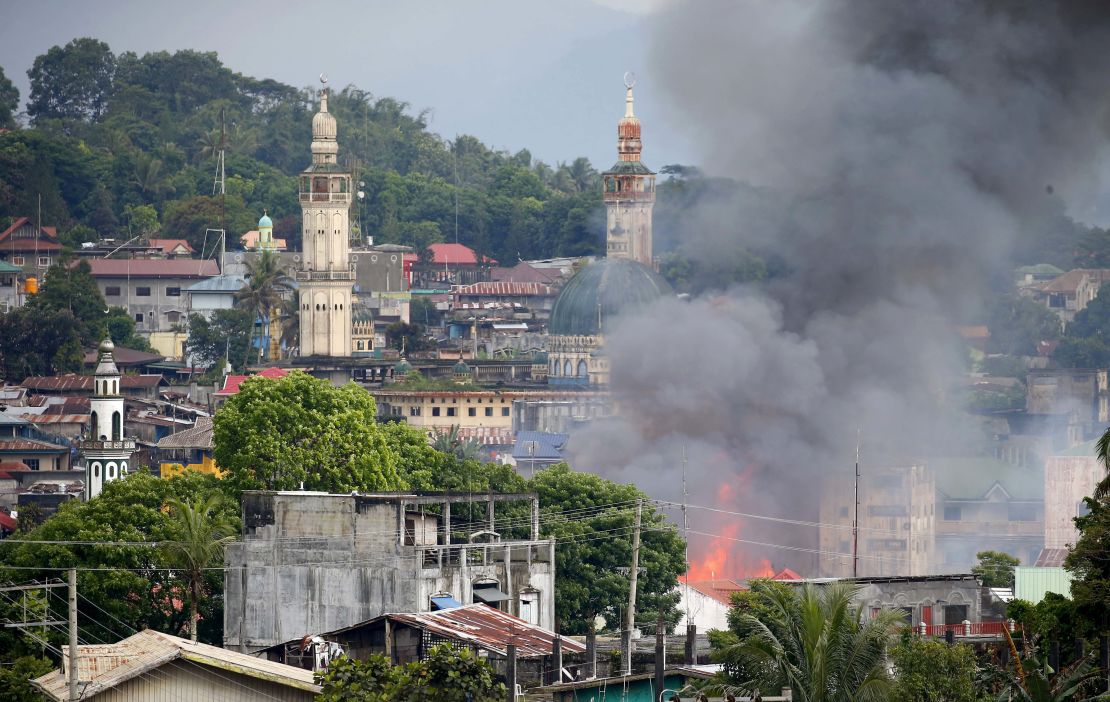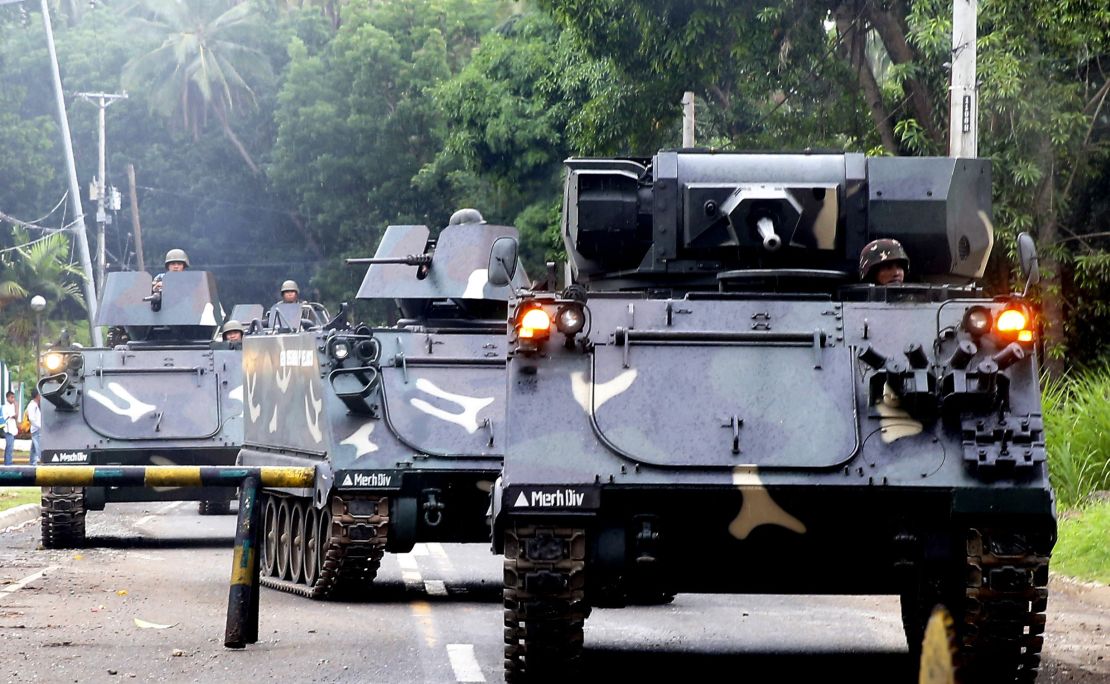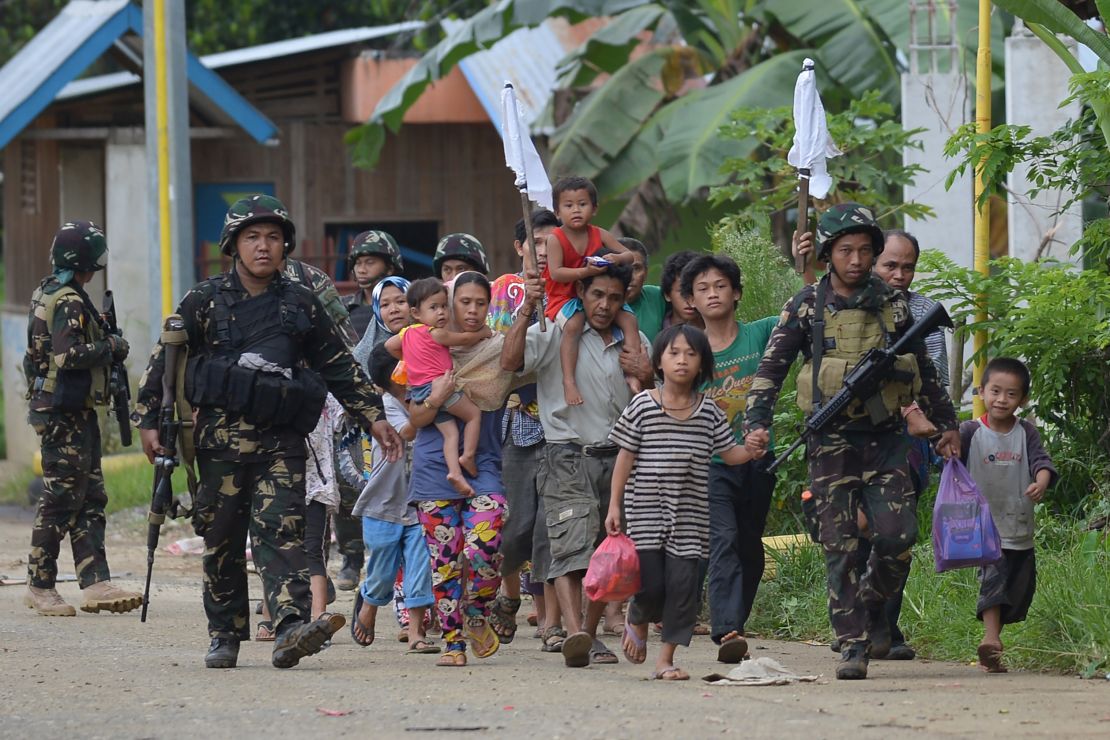Story highlights
NEW: Government says 8 foreigners among militants killed
ISIS-linked fighters in the Philippines city of Marawi holding out against heavy assault
Eleven soldiers were killed and seven others injured in what the Philippines government has described as a “friendly fire incident” in Marawi, on the southern island of Mindanao.
Government forces are battling ISIS-linked militants for control of the city, displacing at least 70,000 residents and leaving 140 people dead.
According to CNN Philippines, on Wednesday two jets were conducting strikes against members of the Maute group, which has pledged allegiance to ISIS, when one struck members of the 55th Infantry Battalion.
“The first plane dropped the ordnance accurately, but the second one missed. It hit our troops … there must be some mistake there,” said Defense Secretary Delfin Lorenzana.
Air strikes will not be halted over the incident, Armed Forces of the Philippines (AFP) spokesman Brig. Gen. Restituto Padilla said Thursday, adding they were needed to neutralize Maute snipers.
Also speaking Thursday, Philippines President Rodrigo Duterte said those behind the violence in Marawi were “purely ISIS.” He added that Isnilon Hapilon, the designated ISIS emir for Southeast Asia, was a “student of history” and had planned the latest rebellion for a long time.

Foreign fighters
Lorenzana said Thursday that eight foreigners had been identified among militants killed by government forces.
“There were two from Saudi Arabia, two from Malaysia, two from Indonesia, one from Yemen and one from Chechnya,” he said.
“We don’t have any record of them coming through the proper channel, through the airports. There’s only one way, maybe coming from Indonesia or from Malaysia.”
ISIS-linked groups operate in the semi-lawless border areas between the Philippines, Indonesia and Malaysia and are made up of fighters from several different countries.
“What’s happening in Mindanao is no longer a rebellion of Filipino citizens. It has transmogrified into invasion by foreign terrorists,” said Philippines Solicitor General Jose Calida during a press briefing last month. “They want to create Mindanao as part of the caliphate.”
Numerous officials from the Philippines and elsewhere in the region have expressed concern that ISIS members could travel from the Middle East to Southeast Asia, either under the guise of local fighters returning home, or trainers sent to provide expertise and guidance to the so-called “Brigade of the Migrant” based in the southern Philippines.

No end in sight
Martial law has been declared for the entire island of Mindanao, where fighting is ongoing. Earlier this week, officials said government forces were in near complete control of Marawi, but rooting out the last pockets of resistance seems to be taking longer than first expected.
“Recalcitrant remnants of the Maute-ISIS refuse to heed the call of government to give up their arms and continued their resistance while holed in fortified buildings and structures,” the AFP’s Padilla said.
“They are employing hostile sniper fires and IEDs (improvised explosive device) against everyone – from government security forces, to relief and rescue workers, to civilians – who get in the way of their fanatical desire to dismember Marawi from the Philippines and establish it as an ISIS province in this part of Asia.”
CNN Philippines reported Thursday that 100 militants had been killed since the fighting broke out on May 23. As of Wednesday, 19 civilians and 21 security forces had died, according to state media.
At least 5,000 members of the Moro National Liberation Front (MNLF) – a separatist Muslim militant organization that has signed a peace treaty with Manila – are positioned around Marawi ready to assist government forces, CNN Philippines reported Wednesday.
Duterte suggested last week he would be open to tapping the former rebel group, along with members of the Moro Islamic Liberation Front for support against ISIS.
“If this martial law lasts and you want to help us fight for the republic … I will use you as soldiers, with the same pay, privileges, and I will build houses for you,” he said.

Child fighters
The Philippines Justice Department has issued warrants for more than 100 members of the Maute group and the Abu Sayyaf terrorist organization, both of which are believed to be involved in the fighting in Marawi.
Militants entered the city after a failed government operation to arrest Hapilon, an Abu Sayyaf leader who has succeeded in uniting several disparate Islamist groups in the region under the ISIS banner. Philippines officials said he was likely still in the city, pointing to the ferocity of ongoing resistance from the Maute fighters.
According to CNN Philippines, some of those fighters are boys as young as 16 or 14. Refugees from Marawi have spoken of seeing child soldiers, and previous ISIS propaganda about the region showed children and young teenagers wearing black bandanas and taking part in training exercises.

